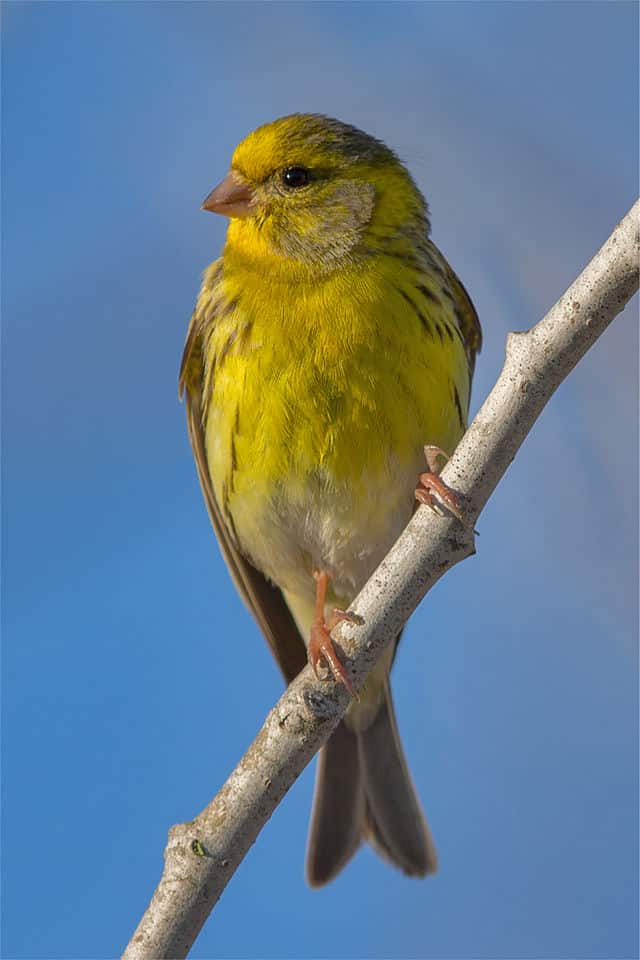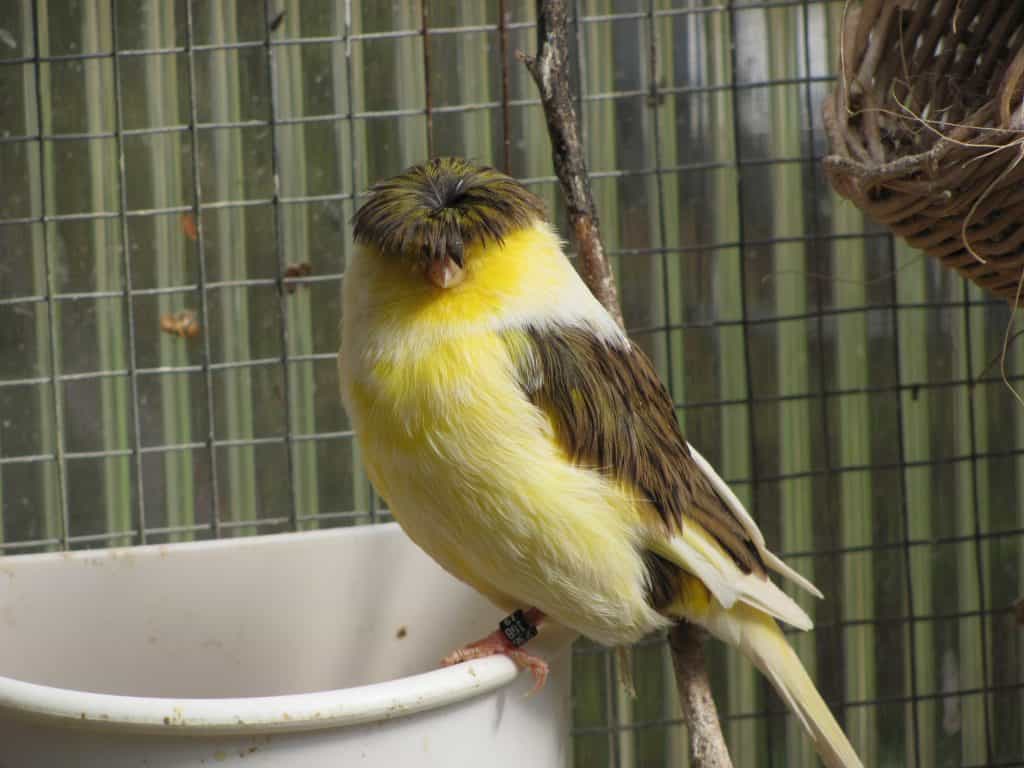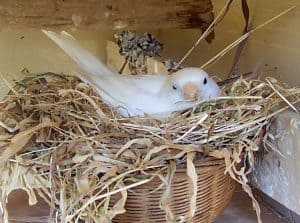Personally, there’s just something about canaries – their little faces, their beautiful song and the many different types and colours. Every time I go to a bird sale or an auction I have to physically restrain myself from buying them all (or trying to). Yes, they can be moody with each other and only sing for some of the time in some cases and breeding them is a little random. But they are adorable! So for anyone who hasn’t encountered canaries before, here is a look at some of the basics.
Family tree
The canary is actually a subspecies of the wild canary, a songbird of the finch family that really does come from the Canary Islands, as well as from the Azores and Madeira. Its Latin name is Serinus canaria domestica and this means it is in the same large group of species as other familiar birds such as the Greenfinch, Chaffinch and Goldfinch, loosely referred to as the True Finches or Fringillidae family. It is a direct cousin, if you like, of the European Serin for those birdwatchers out there.
Canaries in captivity
Canaries have been kept in captivity for a very long time with mentions of them going back to the 17th century. They were brought from Spain to parts of Europe and became expensive and fashionable with the courts of Spain and England.
Monks began to keep the birds and sold the males due to their beautiful song but purposefully kept the price high by only selling a few here and there. Soon the Italians managed to get some hens and breeding of the birds increased, making them easier to get and spreading them across the continent.
Canaries once again became famous for a slightly less cheerful but very important reason – as their work alongside miners to warn the workers of poisonous gases. This is because toxic gases such as carbon monoxide and methane killed the canaries before the humans so if the bird became distressed, the miners would realise something dangerous was about. The use by miners lasted until the mid-1980s and led to the saying ‘canary in a coal mine’ to indicate something that warned of an upcoming crisis.
Types of canary
There are generally three groups of canary breeds; colourbred, type and song canaries.
Colourbred canary, as the name suggests, are bred for their colour and include the popular red factor canary as well as satinettes, mosaics and many other shades.
Type canaries are bred to conform to a standard, much like when showing a dog or a cat and include Fife, Border and the crested Gloster breeds.
Finally, song canaries are the opera singers of the clan, bred for their specific and spectacular song even when compared to other canaries and include Spanish Timbrado, German Rollers and Waterslagers.
Despite all the differences in shape, size, colour and song, they are all still essentially the same species of bird. This means that care for and breeding them is basically the same no matter which breed you choose.
Caring for canaries
If you have had experience with small finches such as Zebra finches, you will notice that they are generally happy around others of their species, though can become a little territorial when breeding. With canaries, this is usually not the case – when they aren’t breeding they don’t have anything to do with each other.
They are almost anti-social and come the beginning of breeding season, males will fight with each other to win the favours of the female. For this reason, many breeders keep the sexes separate outside breeding season and then release pairs into breeding cages when the right time of year comes around.
It also means that canaries can live as pets alone in a cage and for this reason I think their popularity as a companion bird has never wavered. A single bird in a large cage will be relatively happy but always remember that even if it has never seen a member of the opposite sex, the urge to breed is strong in all birds.
Canaries live happily with other birds smaller than they are, apart from maybe chasing them away from a favoured food bowl. They can hybridise with other related species such as the Goldfinch but these offspring are generally infertile and referred to as mules. Some people are very keen on the breeding of these hybrids that can have the canary’s song and the other species appearance.
Feeding a canary
There are now specially made canary mixes available though I have found that some of mine prefer the Foreign Finch mixture. They love millet spray and will often try other types of seed I offer infrequently such as Niger seed, hemp and blue maw. They will also enjoy greens such as spinach and kale, fruit such as apple or pear and will try most things offered to them because the other birds are eating it.
Canary are bath addicts and need access to fresh water to bathe in as well as for drinking. They enjoy bathing at least every day and do a comprehensive job of it, hardly being able to fly when they are done. This keeps their feathers in top condition as well as helping rid any pests that they might pick up if living outside.
Breeding time
Sexing canaries is nearly impossible to do visually but only the cock ever sings – hens might make some noise but there is a clear difference.
They prefer to nest in a nesting pan, plastic or wicker for example, and a little false greenery around the nest never hurts to let them feel like they are in a tree. The hen does the nest building, adding coconut fibre, jute or feathers to the pan leaving a tiny little concave to deposit the eggs and sit on them, which she alone does too. The male will sit near the nest and feed her while she is sitting but doesn’t normally take a turn.
There are typically 4-5 eggs laid, blue and speckled in colour and are incubated for around 13-14 days. Chicks are then fed by the parents for two weeks in the nest and another week or two once they fledge. Several clutches a year can be raised by healthy birds with the right conditions.
A great cage or aviary bird
Canaries are great birds for a large cage or an aviary. Despite sometimes being a little temperamental and not always breeding as easy as I’d like, I rarely find myself without them. Their song is anywhere from lovely to amazing and they are always interesting and active birds to watch.


